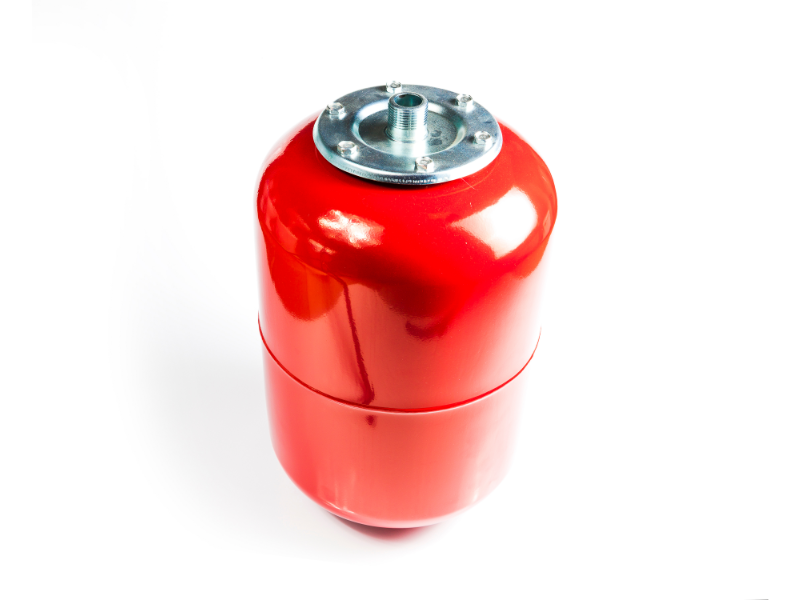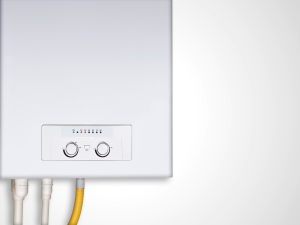Water is one of the few main necessities that many people need for their daily lives. Whether that’s for cooking or cleaning, many people across the United States and the rest of the world rely on steady and reliable access to water.
As a result, many homes are supplied with clean water to support those needs. However, the regular use of hot water requires many different safety measures.
One such measure is the thermal expansion tank. Since water often expands whenever it’s heated, the expansion tank is installed to ensure that the house and its occupants remain safe whenever the faucets are opened. However, many people don’t know or realize just what an expansion tank is and how crucial it is to their home comfort and safety.
In this article, we’ve covered what exactly an expansion tank is and what it does, as well as a few other questions that you and other homeowners might have. If you’re interested in getting an expansion tank installed or want to replace the one you have, you can contact us at Clover Contracting for reliable help whenever you need it.
What Is a Thermal Expansion Tank for Home Use?
If you haven’t learned what an expansion tank is just yet, you’ll be glad to know that it’s almost exactly what it sounds like. An expansion tank, as the name might suggest, is a somewhat small tank attached to your plumbing a little further down after the water heater.
Often shaped like the big, blue water jugs you might find in doctor’s offices, the expansion tank can either be attached with the water supply running through its top or bottom.
What Does a Thermal Expansion Tank Do in Your Home?
As mentioned earlier, water tends to expand when heated to a certain degree. Unfortunately, this often means that the water gains more pressure that needs to be released to prevent burst pipes and water pressure-related issues.
That’s where water heater thermal expansion tanks come into play. Without it, the excess water pressure can build until it causes your home’s pipes to burst at their weakest spots. To avoid that, the expansion tank is designed in such a way as to relieve the pressure in the water supply, ensuring that you get the water you want without having to worry about unexpected issues.
And to make the supply safer, expansion tanks are installed and connected to work with both drinkable water and any water-powered heating systems.
The main way an expansion tank works is by pulling the heated water into it on one side of the tank. The other side is filled with pressurized air and the two sections of the tank are separated by a flexible rubber diaphragm.
As the water is drawn in, the rubber diaphragm is pushed up due to the water’s pressure. When the water pressure is more than the air’s pressure, the excess water is pushed through to the rest of your home.
How Do You Choose an Expansion Tank?
If you’re looking into getting a new domestic hot water expansion tank, there are a few things you need to consider first. Much like your water heater, the ideal expansion tank should be appropriately sized to ensure your plumbing’s safety. Depending on how much water you use, the tank can be sized to hold two gallons of water for smaller systems to several hundred for much larger water heaters.
Naturally, the size of the tank depends on how often you use hot water and how many faucets use the water at the same time. If you aren’t sure what size you need, many online calculators can help you figure it out. Additionally, you can also get some help by calling one of our team members before installing the expansion tank.
How Much Does the Average Thermal Expansion Tank Cost?
In addition to sizing the expansion tank for your home, it’s important to consider what you’re planning to use it for since this can affect how much it costs in the long run.
Typically, smaller tanks used solely for supplying water to your home’s faucets will be much cheaper. Smaller, residential expansion tanks are incredibly affordable with their costs averaging out to roughly $30. Of course, other factors like brands can influence the price.
On the other hand, larger tanks used for more commercial purposes can cost far more. Since these commercial buildings use far more hot water – like restaurants and even schools – the need is much higher and the plumbing’s safety needs more care. The result is that large thermal expansion tanks can cost anywhere from $800 to $1000.
Installing Expansion Tanks in Your Home
When it comes to installing a thermal expansion tank, you might find that having a good amount of experience in DIY and home renovation makes it quite easy. Any relatively skilled DIYer can usually complete the installation of an expansion tank in less than an hour.
Of course, certain specifications need to be followed for proper installation. While there are many guides online to help and many professional sources online, it’s highly important to install the expansion tank as close to the water heater as you can to reduce the risk of damage. Additionally, install the tank so it “hangs” down and the rubber diaphragm can easily push the water out.
However, it’s a good idea to check with your local housing authority or building department before beginning any installations since some local building codes might demand installations be done by a qualified professional.
Takeaway
Thermal expansion tanks are an incredibly important piece of your plumbing system. Thanks to how the tank functions, the additional pressure that comes with heating water for use is dissipated. This prevents the pipes in your homes from getting damaged due to said pressure.
Though they can be costly depending on your home’s needs, the ability to install an expansion tank can help homeowners in both saving money and protecting their homes.
But if you would rather get a professional to install a new expansion tank, our team at Clover Contracting is ready to help whenever you need it.




